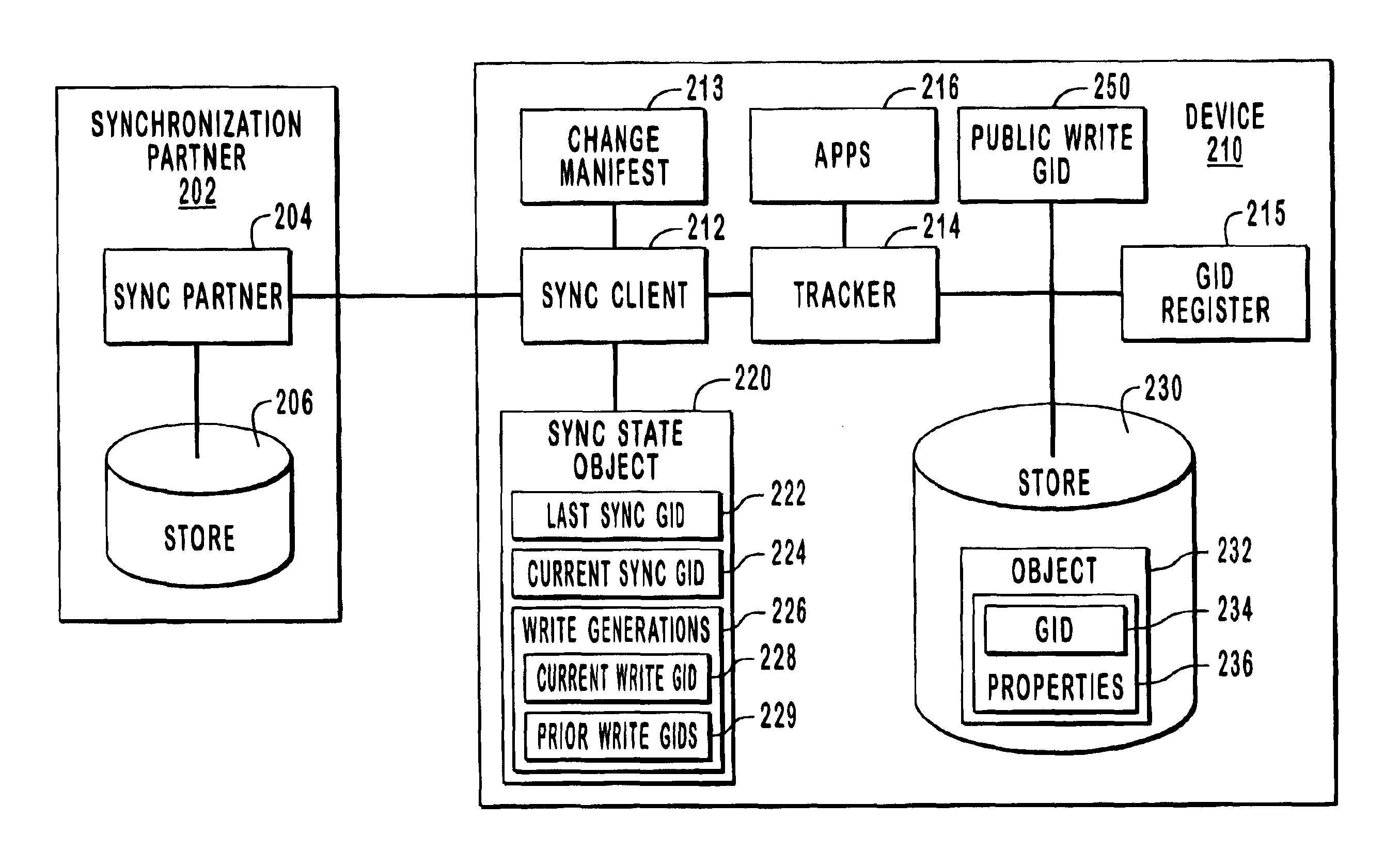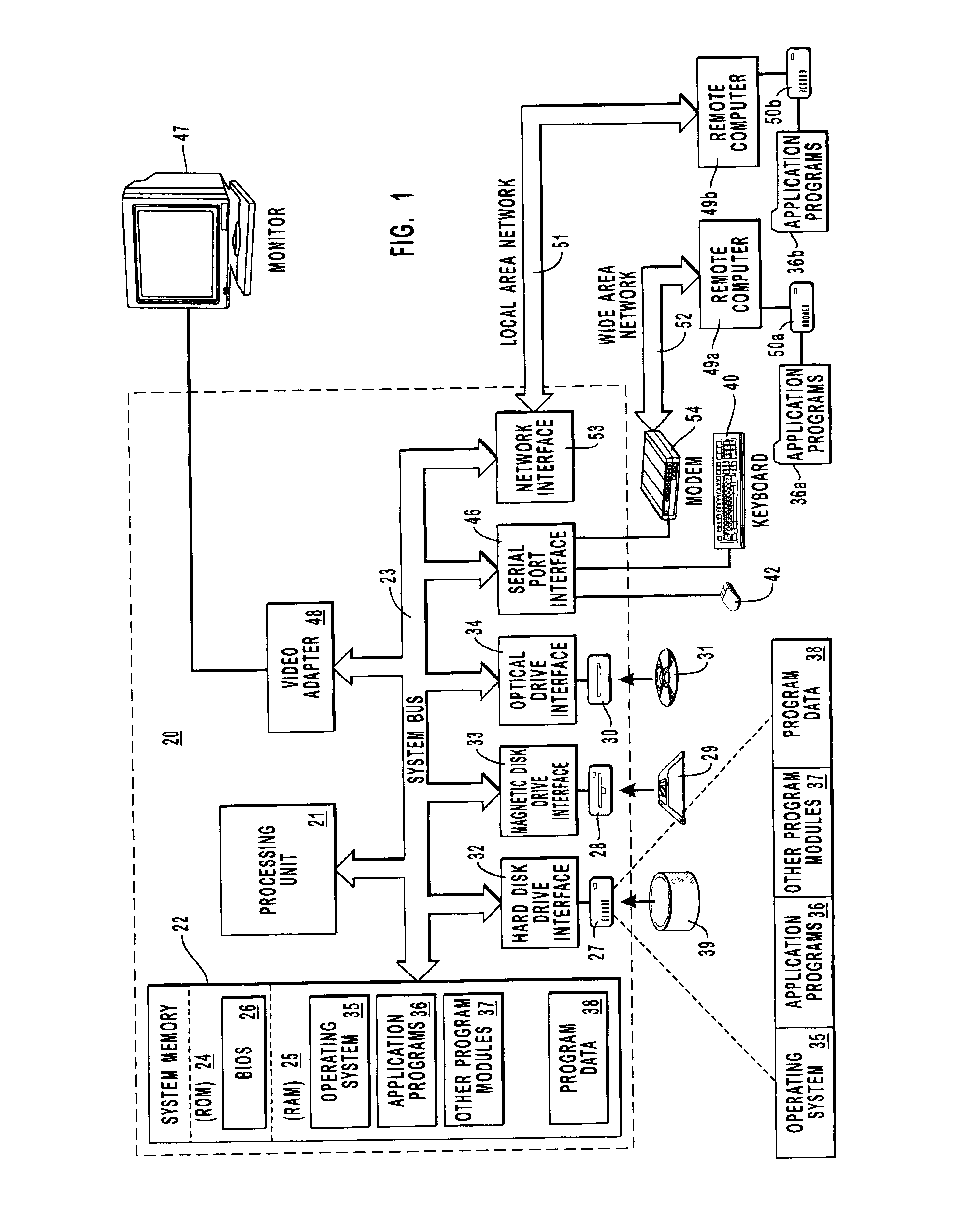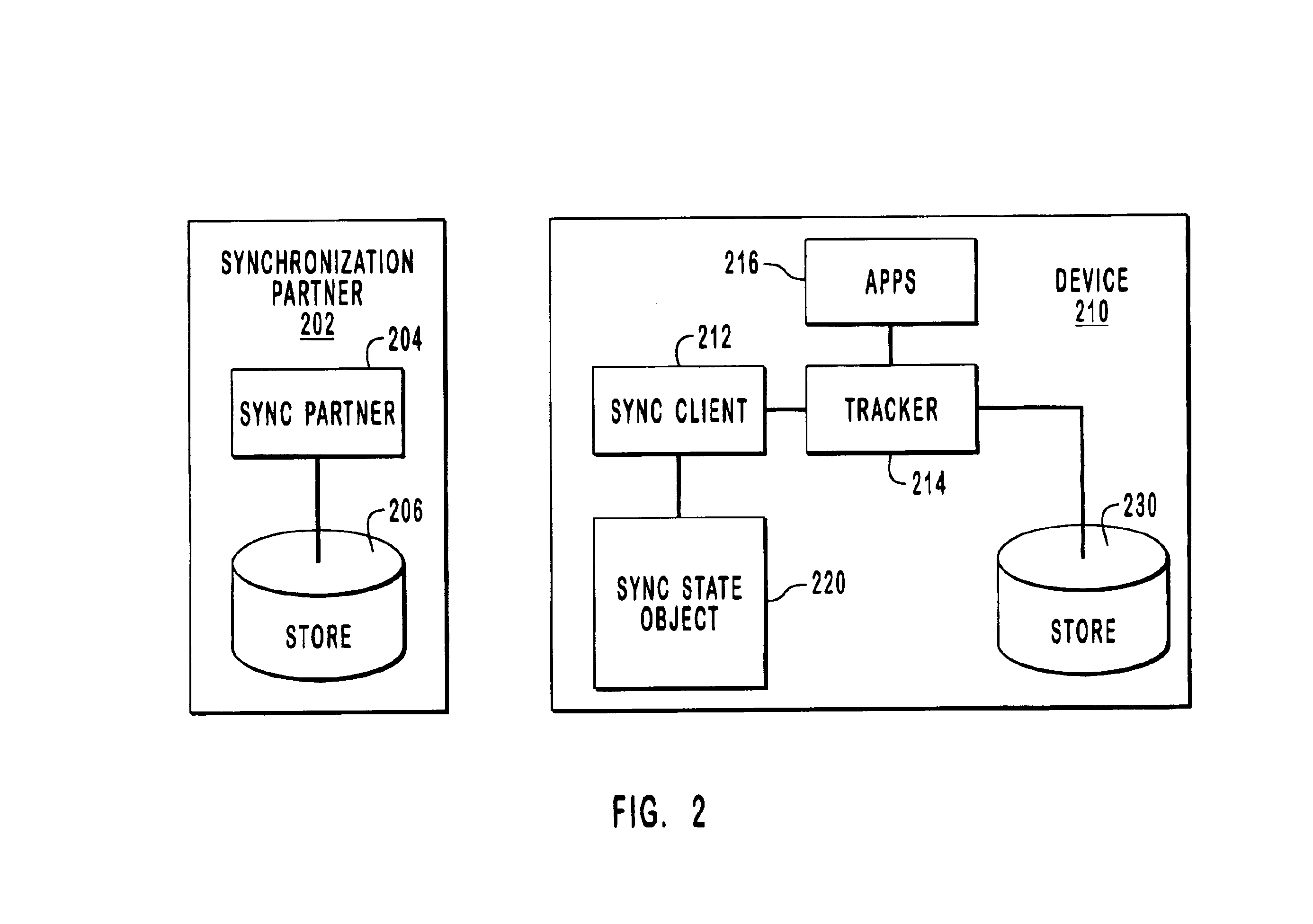Synchronizing a store with write generations
a technology of synchronizing a store and a write generation, applied in the field of system and method for synchronizing a device, can solve the problems of inefficient type of synchronization, device cannot store only a portion of information, and synchronizing a device with one or more synchronization partners
- Summary
- Abstract
- Description
- Claims
- Application Information
AI Technical Summary
Benefits of technology
Problems solved by technology
Method used
Image
Examples
Embodiment Construction
The present invention relates to systems and methods for synchronizing a device with one or more synchronization partners and more specifically to using reserved write generation identifiers (GIDs) to prevent objects from being synchronized unnecessarily. The main goal of synchronization is to identify changes to data objects on both the device and the synchronization partner and to update both the device and the synchronization partner such that they both have the same content. The present invention utilizes reserved or write GIDs, which are used during the synchronization process to determine which data objects have changed since the last synchronization. Each separate sync client is assigned one or more reserved GIDs that only that sync client can use. This enables the origin of object updates to be more easily identified such that they are not synced back to their origin.
After the changed objects have been identified, they are updated such that the synchronization partners and t...
PUM
 Login to View More
Login to View More Abstract
Description
Claims
Application Information
 Login to View More
Login to View More - Generate Ideas
- Intellectual Property
- Life Sciences
- Materials
- Tech Scout
- Unparalleled Data Quality
- Higher Quality Content
- 60% Fewer Hallucinations
Browse by: Latest US Patents, China's latest patents, Technical Efficacy Thesaurus, Application Domain, Technology Topic, Popular Technical Reports.
© 2025 PatSnap. All rights reserved.Legal|Privacy policy|Modern Slavery Act Transparency Statement|Sitemap|About US| Contact US: help@patsnap.com



